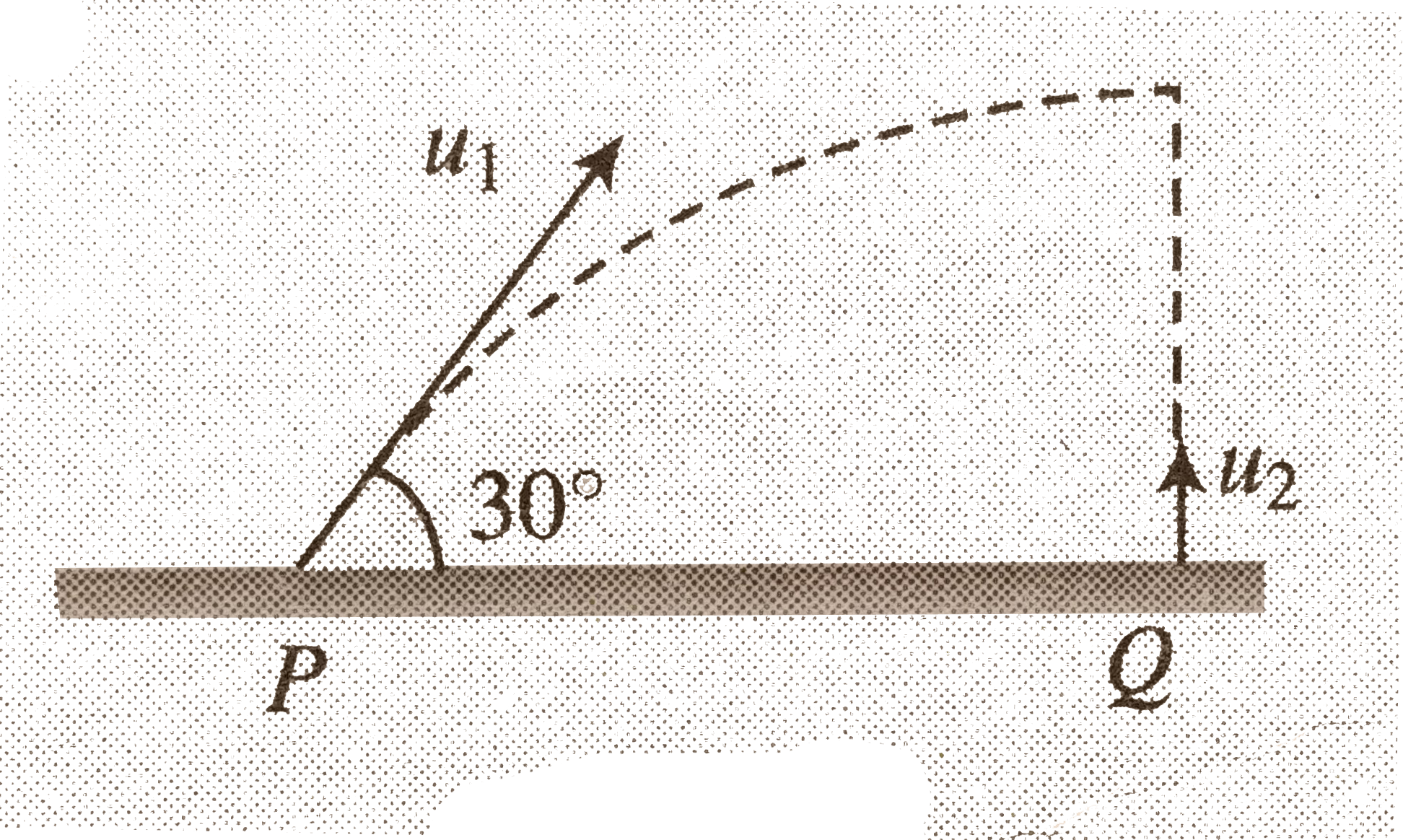A particle P is projected with velocity u1 at an angle of 30∘ with the horizontal. Another particle Q is thrown vertically upwards with velocity u2 from a point vertically below the highest point of path of P. Determine the necessary condition for the two particles to collide at the highest point.
 .
.
Both particles collide at the highest point. It means the vertical distance travelled by both the particle will be equal, i.e., the vertical component of velocity of both particle will be equal
u1sin30∘=u2⇒u12=u2⇒u1=2u2.
Topper's Solved these Questions
- KINEMATICS-2Book:CENGAGE PHYSICSChapter:KINEMATICS-2Exercise:Exercise 5.3
Explore 12 Videos
- KINEMATICS-2Book:CENGAGE PHYSICSChapter:KINEMATICS-2Exercise:Exercise 5.4
Explore 11 Videos
- KINEMATICS-2Book:CENGAGE PHYSICSChapter:KINEMATICS-2Exercise:Exercise 5.1
Explore 15 Videos
- KINEMATICS-1Book:CENGAGE PHYSICSChapter:KINEMATICS-1Exercise:Integer
Explore 9 Videos
- KINETIC THEORY OF GASESBook:CENGAGE PHYSICSChapter:KINETIC THEORY OF GASESExercise:Compression
Explore 2 Videos
Similar Questions
A particle is thrown vertically upward with a velocity of u. Find its time of flight.
View SolutionA particle is thrown with velocity u at an angle ∝ from the horizontal. Another particle is thrown with the same velocity at an angle ∝ from the verticle. What will be the ratio of times of flight of two particles ?
View Solution
Knowledge Check
A particle is projected vertically upward with velocity u from a point A, when it returns to the point of projection .
AIts average speed is u/2.BIts average velocity is zero.CIts displacement is zero.DIts average speed is u.A particle A is projected with speed VA from a point making an angle 60∘ with the horizontal. At the same instant, a second particle B is thrown vertically upwards from a point directly below the maximum height point of parabolic path of A, with velocity VB . If the two particles collide then the ratio of VA/VB should be:
A1B2/√3C√3/2D√3A particle A is projected with speed vA from a point making an angle 60∘ with the horizontal. At the same instant, a second particle B is thrown vertically upwards from a point directly below the maximum hieght point of parabolic path of A with velocity vB. If the two particles collide then the ratio of vA/vB should be
A1B2√3C√32D√3
A particle is projected with a speed V from a point O making an angle of 30∘ with the vertical. At the same instant, a second particle is thrown vertically upwards with a speed v from a point A. The two particle reach H, the highest point own the parabolic path of particle one simultaneously. Then ratio V/v is-

View SolutionA player throws a ball vertically upwards with velocity u. At highest point,
View SolutionA particle is projected with velocity v at an angle of θ with horizontal. The average angular velocity of the particle from the point of projection to impact equals:
View SolutionA particle is fired with velocity u making angle θ with the horizontal.What is the change in velocity when it is at the highest point?
View SolutionA particle of mass m is projected with a velocity μ at an angle of θ with horizontal.The angular momentum of the particle about the highest point of its trajectory is equal to :
View Solution